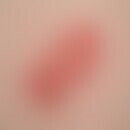Synonym(s)
DefinitionThis section has been translated automatically.
Polypropylene glycols, also known as PPG, are liquid polyglycols with high viscosity. The associated monomer is propylene glycol (1,2-propanediol).
The short-chain representatives of the substance group are dipropylene glycol, tripropylene glycol and tetrapropylene glycol. Polypropylene glycols can be formed by polycondensation of 1,2-propanediol. This process takes place in an analogous way with polyethylene glycols (PEG). Thus, the naming of PPGs corresponds to the PEG names: PPG-9 for example comprises 9 propylene oxide molecules.
Polypropylene glycols are used in non-ionic detergents and cleaning agents. They are used in cosmetic formulations as surfactants, antifoams and softeners.
In technical areas they are used in various synthetic resins, in antifreeze agents.
PPG are more hydrophobic than polyethylene glycols and are partly used as a substitute for mineral and vegetable oils.
ClassificationThis section has been translated automatically.
The following PPGs are used in cosmetic formulations: PPG-7, PPG-9, PPG-12, PPG-13, PPG-15, PPG-17, PPG-20, PPG-26, PPG-30, PPG-33, PPG-34, PPG-51, PPG-69.




